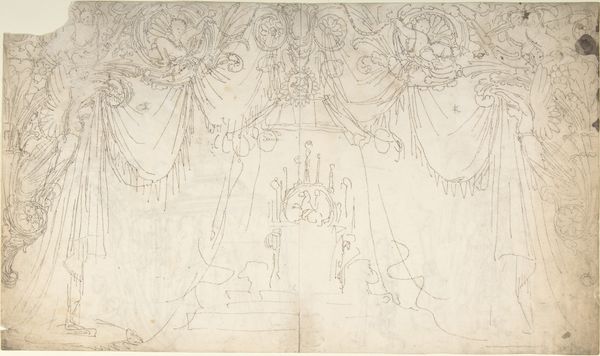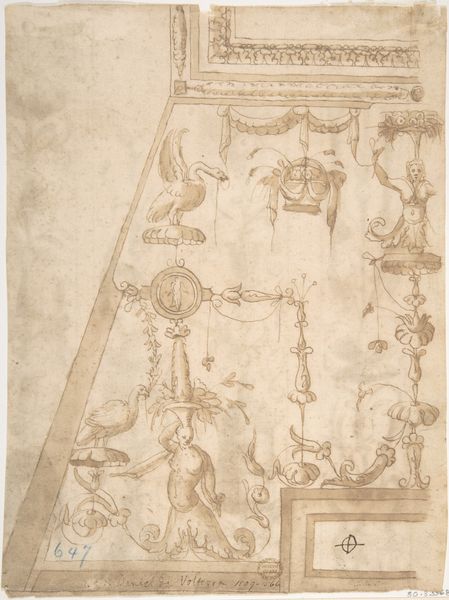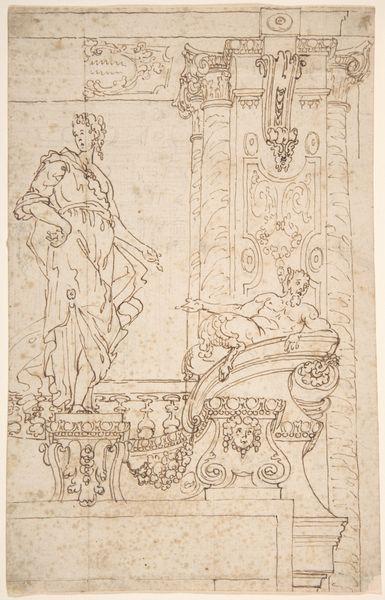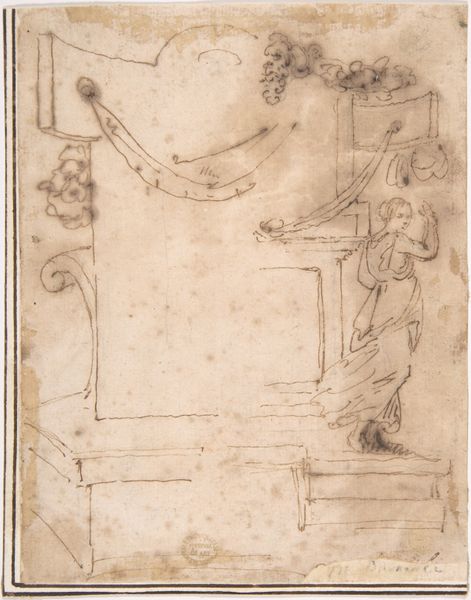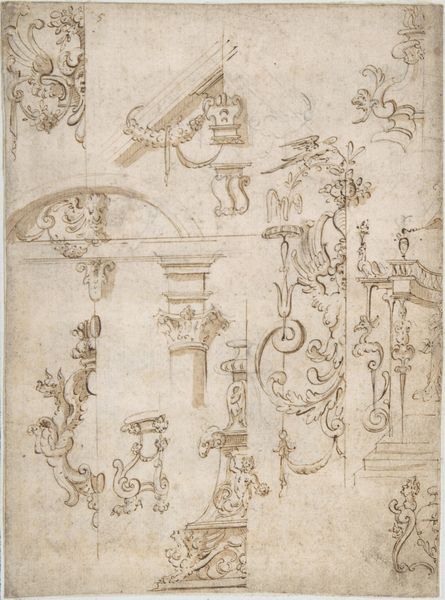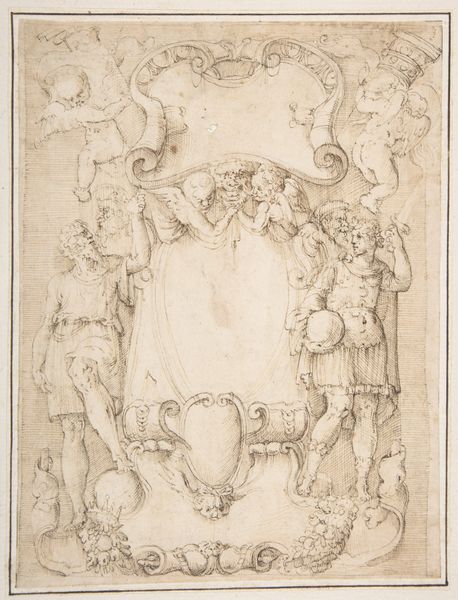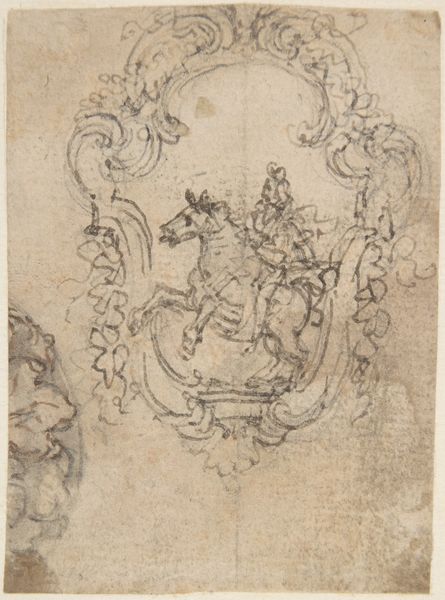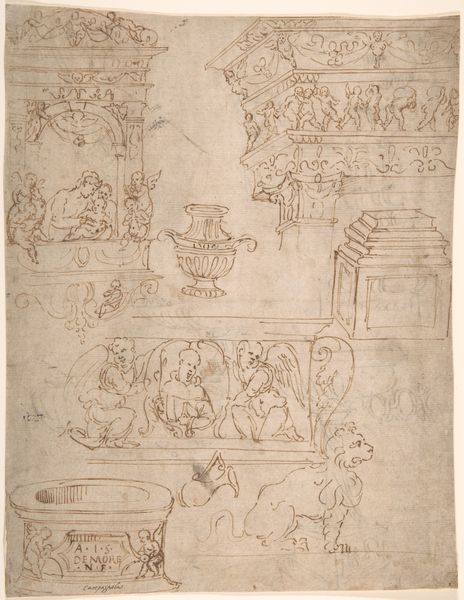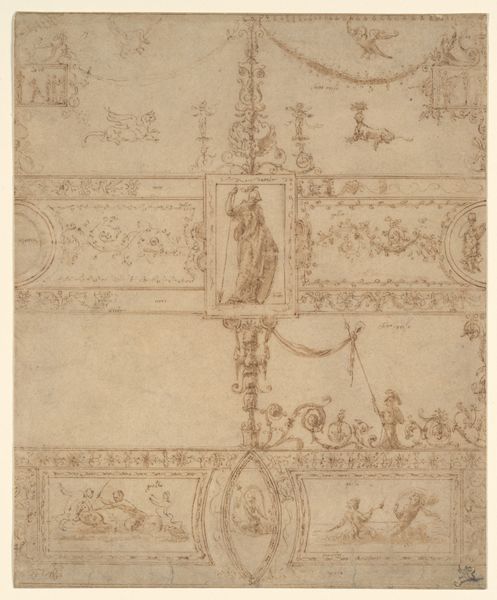
Design for a Grotesque Wall Decoration 1501 - 1547
0:00
0:00
drawing
#
drawing
#
ink painting
#
figuration
#
11_renaissance
#
history-painting
#
italian-renaissance
Dimensions: sheet: 10 1/16 x 9 3/4 in. (25.6 x 24.8 cm)
Copyright: Public Domain
Editor: This is "Design for a Grotesque Wall Decoration," created between 1501 and 1547 by Perino del Vaga. It’s a drawing, currently held at the Metropolitan Museum of Art. I'm struck by the overall sketch-like quality and how it feels both classical and bizarre at the same time. How do you approach a piece like this? Curator: The formal elements command our initial attention. Observe the line work. Note the confident strokes that delineate the figures, contrasted with the more delicate hatching used to suggest shadow and volume. Do you notice the dynamic interplay between positive and negative space? Editor: Yes, I see how the figures are defined by these strong outlines, but there’s also a lot of empty space, giving it a sense of lightness, despite the density of the imagery. Curator: Precisely. The composition, fragmented yet balanced, hints at a deliberate arrangement, almost architectural in its organization. Consider the placement of each grotesque element – how they relate to one another through a visual language of recurring motifs and contrasting forms. We must consider each line, each shape, not for any narrative they suggest, but how they function within this structured pictorial space. How do the linear rhythms direct the eye? Editor: The eye definitely bounces around. There isn't a single focal point; it feels like it wants you to take in the whole scene as one experience. It’s almost like the figures are tessellating with each other. Curator: A fitting analogy. Also, how does the monochromatic color further contribute to this balance? Editor: The absence of color simplifies the image. Without it, we focus on line and form rather than being distracted by hue or tone. Curator: Indeed. And it is precisely this emphasis on form and line that reveals the underlying structure and aesthetic intent of del Vaga's design. I’ve learned new ways to read the forms through our talk!
Comments
No comments
Be the first to comment and join the conversation on the ultimate creative platform.
